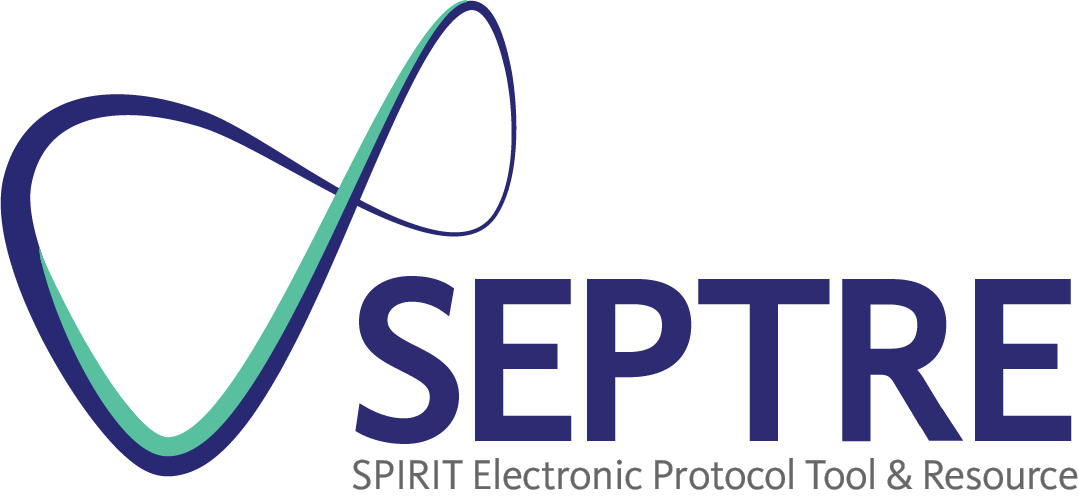Item 11a: Interventions for each group with sufficient detail to allow replication, including how and when they will be administered.
Example
“Eligible patients will be randomised in equal proportions between IL-1ra [interleukin-1 receptor antagonist] and placebo, receiving either a once daily, subcutaneous (s.c.) injection of IL-1ra (dose 100 mg per 24 h) for 14 days, or a daily s.c. injection of placebo for 14 days . . .
The study drug and placebo will be provided by Amgen Inc in its commercially available recombinant form . . . The study drug and placebo will be relabelled by Amgen, in collaboration with CTEU [Clinical Trials and Evaluation Unit] according to MHRA [Medicines and Healthcare Regulatory Agency] guidelines.
The first dose of IL-1ra will be given within 24 h +2 h of the positive Troponin. Injections will be given at a standardised time (24 ± 2 h after the previous dose), immediately after blood sampling. IL-1ra or placebo will [be] administered to the patient by the research nurse while the patient is in hospital. During the hospital stay, the patient will be taught to self-administer the injection by the research nurse and on discharge will continue at home. This has proven possible in other ACS [acute coronary syndrome] trials that required self injection of subcutaneous heparin [Reference X]. Full written guidance on self injection will also be provided to patients. If self injection is found not to be possible in an individual patient for unexpected reasons, an alternative method will be sought (e.g. district nurse, or attending the hospital) to try and maintain full compliance with scheduled study drug regimen after discharge. Patients will also be asked to complete a daily injection diary. All personnel will be blinded to the identity of the syringe contents.” 145
Explanation
Studies of trials and systematic reviews have shown that important elements of the interventions are not described in half of the publications.146;147 If such elements are also missing from the protocol, or if the protocol simply refers to other documents that are not freely accessible, then it can be impossible for healthcare providers, systematic reviewers, policymakers, and others to fully understand, implement, or evaluate the trial intervention.148 This principle applies to all types of interventions, but is particularly true for complex interventions (e.g., health service delivery; psychotherapy), which consist of interconnected components that can vary between healthcare providers and settings.
For drugs, biological agents, or placebos, the protocol description should include the generic name, manufacturer, constituent components, route of administration, and dosing schedule (including titration and run-in periods, if applicable).149;150 The description of non-drug interventions – such as devices, procedures, policies, models of care, or counselling – is generally more complex and warrants additional details about the setting (Item 9) and individuals administering the interventions. For example, the level of pre-trial expertise (Item 10) and specific training of individuals administering these complex interventions are often relevant to describe (e.g., for surgeons, psychologists, physiotherapists). When intervention delivery is subject to variation, it is important to state whether the same individuals will deliver the trial interventions in all study groups, or whether different individuals will manage each study group – in which case it can be difficult to separate the effect of the intervention from that of the individual delivering it. Interventions that consist of ‘usual care’ or ‘standard of care’ require further elaboration in the protocol, as this care can vary substantially across centres and patients, as well as over the duration of the trial.
See TIDieR checklist for further recommendations on intervention descriptions
| 10: Eligibility criteria | 11b: Interventions – Modifications |

